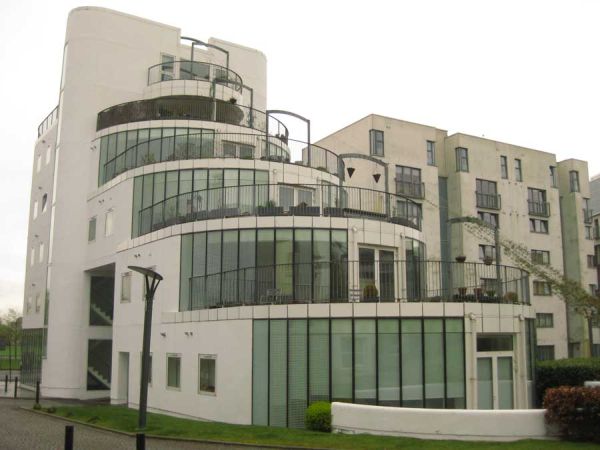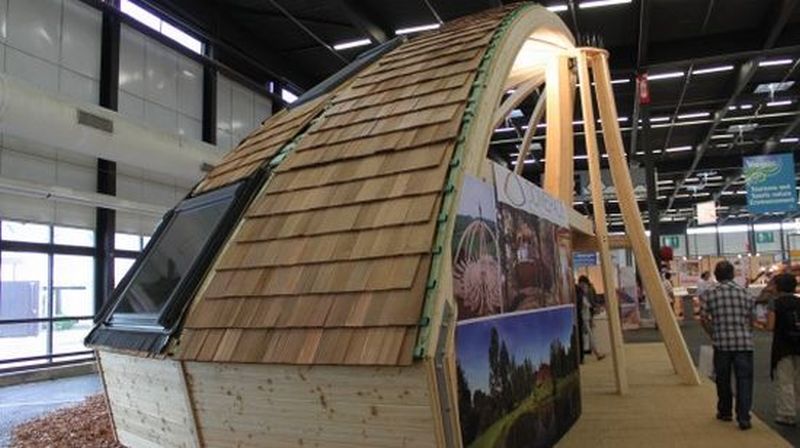
A green home focuses on efficient use of energy, water and construction material. A green home is a house which is redesigned or built in order to conserve energy, improve indoor air quality, use sustainable, recycled or used materials. To build a green home, you can make use of eco friendly building materials like fly-ash cement and blocks, steel and tiles, recycled aluminum, bamboo based products, green roofing products and so on. On the technology front too, there are a lot of options available to build green homes. Energy saving air conditioners, water saving solutions, composting toilets, high performance glass windows and efficient building management systems are some of them. Recycling and using alternative cleaning materials and minor changes at home can add up to real benefits for the planet and to your own health and happiness. Following are ten interesting ways to make your house a green home:
1. Modify your appliances
Appliance use comprises approximately 18 percent of a typical home’s total energy bill (fridge being one of the biggest energy hogs). If an appliance is more than 10 years old, it must be replaced with energy-efficient models that bear their ‘Energy Star’ logo. Energy Star-qualified appliances use 10-50 percent less energy and water when compared to standard models. Also, buying local fruits and vegetables helps to cut down on the fossil fuels burned to get the food to you. Pesticides, transportation and packaging are all things to be considered when stocking up.
2. Install low-flow
Installing low flow showerheads and faucet aerators will help to save water without sacrificing water pressure. An average low flow showerhead can save in a family of four somewhere around $285 per year. They will cost you less than $15 and installing them is pretty easy.
3. Control temperature
The thermostat should be turned down in cold weather and kept higher in warm weather. Each degree below 68°F during colder weather saves up to 5 percent more heating energy, while keeping the thermostat at 78°F in warmer weather will save you energy and money.
Shade your east and west windows to keep your home cool in warmer weather and heat- generating activities such as dishwashing, etc., should be delayed until evening.
Monthly cleaning of furnace’s air filter during heavy usage can help to save energy. Also a new furnace should be considered as furnaces nowadays are about 25 percent more efficient than they were in the yesteryears.
4. Insulative jacket for your water heater
Putting an insulative jacket around your hot water heater and insulating the pipes around the water heater can help you save energy and money. Insulative jackets cost somewhere between $ 15 and $20, and you can get pipe insulation for less than $1 per six feet. If the temperature on the water heater is scaled down to 120 degrees, it will help prevent scalding.
5. Use eco friendly cleaners
In place of household cleaners that are usually toxic to environment and you, eco-friendly elements should be used. For example, grain alcohol may be used instead of toxic butyl cello solve (found in carpet cleaner and window cleaners), and plant-oil disinfectants such as eucalyptus or sage rather than triclosan (an antifungal agent found in soaps and deodorant), plant oils rather than petroleum in detergents. In fact, by using simple ingredients such as soap, water, baking soda, vinegar, washing soda, lemon juice, etc., we can make our own cleaning agents.
6. Use bamboo for hardwood floors
Bamboo replenishes itself at a relatively fast rate due to its high yield therefore, it is considered as an eco-friendly flooring material. Whereas typical hardwood trees take around 40 -100 years to mature, bamboo takes just 4-5 years to mature. However, while using bamboo as flooring wood, you must ensure to look for sources that use formaldehyde-free glues.
7. Use VOC paints
Conventional paints contain toxic metals and volatile organic compounds that can cause ozone pollution, smog and indoor air quality problems with ill health effects. These unhealthy ingredients are released into the air while your house is being painted, while the paint dries and even after the paints are completely dry. Opting for zero- or low-VOC paint is a good option for a greener home.
8. Opt for a passive solar design
Passive solar design for natural heating and cooling is practiced throughout the world. By using stone floors, building orientation, roof overhangs, window placements, reflective barriers and other techniques, you can control natural solar energy. An open floor plan optimizes the effect of passive solar heating or cooling. Double glass panes provide an insulating air space between the panes, reducing heat transfer. Doors and windows should be placed to catch the prevailing breeze and allow cross ventilation. Lower inflow windows and higher outflow windows keeps air moving, as hot air rises. The metal oxide coating on Low-E (emissive) glass helps to keep solar heat out, and interior heat in.
9. Use renewable or recycled materials
Consider decks made of waste wood and plastic, such as Trex or other brands. You can use alternative building materials such as rammed earth, straw bale or insulated concrete panels. Look for a place to re-cycle household trash; it may be a storage bin in the kitchen or a holding bin in the garage. Use locally produced and easily renewed materials when possible.
10. Follow certain precautions on the construction site
a. Plants and bird habitat on the site should be protected during the construction.
b. Natural drainage should be made a part of your building and landscaping design.
c. Make sure leftover paints and solvents are not buried on the site.
d. Construction waste should be properly disposed of.




